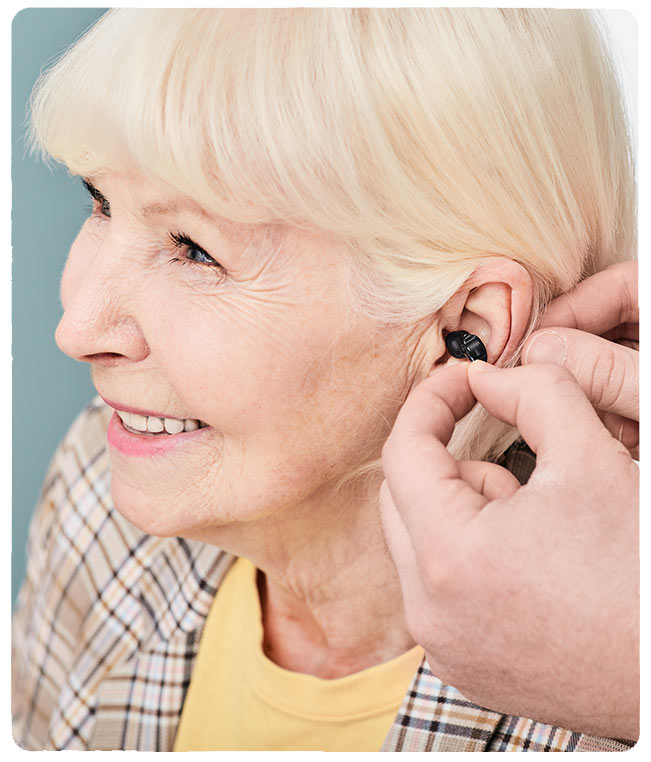Conductive Hearing Loss
Conductive hearing loss occurs when there is an issue with sound reaching your cochlea. This is the bone inside your ear that’s responsible for hearing sounds. The good news is that conductive hearing loss is often a solvable issue that typically occurs due to blockages.
Signs, causes &
treatment
Conductive hearing loss occurs in the middle or outer part of your ear.
This is where the sounds you hear get converted into the vibrations your inner ear requires so it can transmit the vibrations to your brain.
Blockages and impediments in the middle or outer ear can distort or prevent the conversion of sound waves into vibrations.
Signs of Conductive Hearing Loss
How do you know if you have sensorineural hearing loss? Look for the following signs and speak to a Freedom Hearing audiologist if you have any concerns.
Muffled hearing
If sounds seem muffled or people seem like they’re mumbling when they speak, you may have a blockage that’s preventing sound from reaching your inner ear.
Feeling full
You may feel like your ears are full of something, such as ear wax. This often manifests as a “stuffy” feeling that you can’t remedy by cleaning your ears.
Physical issues
Conductive hearing issues may cause pain, dizziness, or tenderness around the ear. If these symptoms combine with muffled hearing, you may need to speak to an audiologist.
Try our quick hearing loss quiz
If you’re unsure about whether you should speak to a Freedom Hearing audiologist, take this quick quiz.
If you answer “yes” to most or all of these questions, please schedule your free hearing check with our team.
Struggling to hear these days?
Speak to a Freedom Hearing audiologist now!
Causes & Treatment
There are many potential causes of conductive hearing loss:
Treatment options for conductive hearing loss vary depending on the specific cause of the condition.

Antibiotics may resolve infections and surgery can remove blockages.
If neither proves effective, a hearing aid can help to restore some of your hearing.
If you’d like to learn more or need to confirm if you have a conductive hearing issue, schedule a hearing check with the Freedom Hearing team today.
Real reviews from real customers
Conductive FAQs
An issue with the outer or middle ear stops sound waves from getting to the inner ear, resulting in conductive hearing loss.
This form of hearing loss is usually curable with the appropriate medical or surgical treatment.
These conditions might be either transient or persistent.
They are caused by problems in the middle or outer ear that prevent sound from reaching the inner ear.
The voices and noises may seem faint to those who have this ailment.
While conductive hearing loss may frequently be treated with surgery and antibiotics, sensorineural hearing loss is always irreversible.
While some forms of conductive hearing loss are irreversible, others are treatable with the right medical attention.
Hearing loss is tested using the Rinne and Weber tests.
They assist in determining if you could have sensorineural or conductive hearing loss.
This information enables a physician to develop a treatment strategy for your hearing changes.
Rinne tests evaluate hearing loss by contrasting bone conduction with air conduction.
Air conduction hearing, which occurs through the air near the ear, involves both the eardrum and ear canal.
Bone conduction hearing is based on vibrations being perceived by the ear’s special nerve system.
The Weber test is an additional evaluation tool for conductive and sensorineural hearing problems.
Book your FREE hearing check
